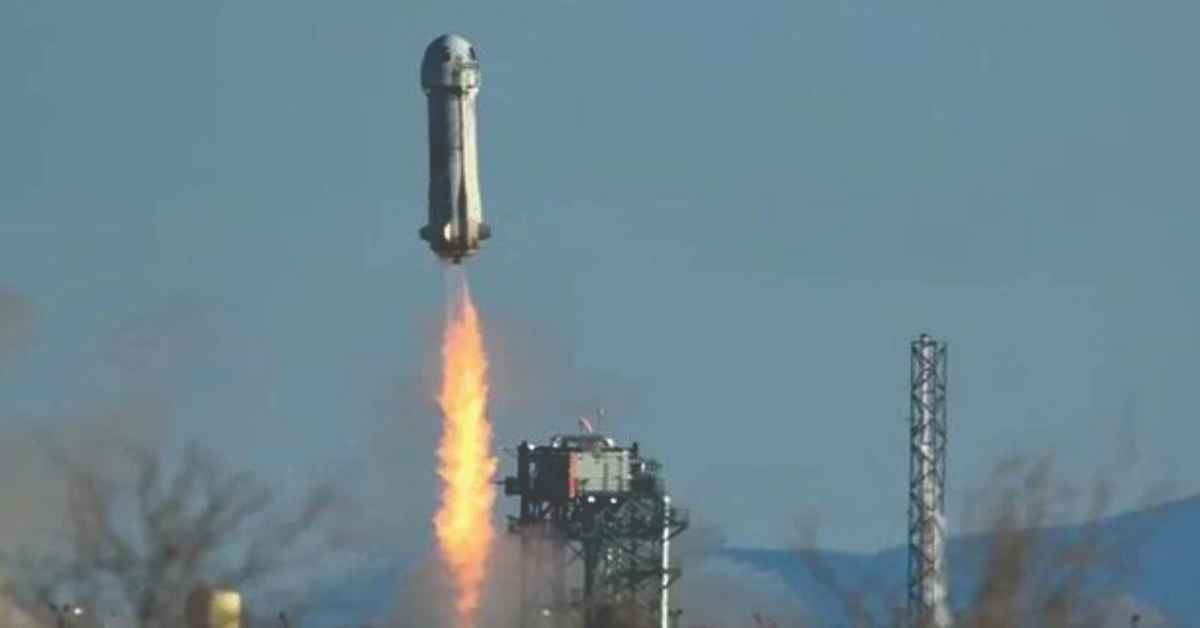SpaceX Triumphs with Booster Catch but Faces Setback with Upper Stage Explosion
The first successful catch occurred in October, following a November test where the booster landed in the Gulf of Mexico instead.

Elon Musk’s SpaceX celebrated a milestone on Thursday as the company’s latest Starship test achieved a successful booster recovery.
However, the achievement was marred by the loss of the rocket’s upper stage, which exploded during re-entry.
Successful Booster Catch
The Starship rocket, SpaceX’s massive next-generation vehicle, launched from its Starbase facility in Boca Chica, Texas, at 4:37 PM (2237 GMT).
This marked the seventh test flight of the towering 403-foot (123-meter) vehicle, which has been designed to support Musk’s vision of Mars colonization and NASA’s lunar missions.
The Super Heavy booster, which powers the first stage of the rocket, successfully returned to Earth.
Seven minutes after liftoff, it decelerated from supersonic speeds, producing sonic booms, before settling into the launch tower’s “chopstick” arms.
This feat, executed for only the second time, drew cheers from the SpaceX team.
The first successful catch occurred in October, following a November test where the booster landed in the Gulf of Mexico instead.
Upper Stage Explosion
The celebration was short-lived as SpaceX lost contact with the upper stage of the rocket.
The company later confirmed a “rapid unscheduled disassembly,” its term for an explosion.
A propulsion anomaly appears to have caused the upper stage to break apart in a fiery cascade over the Atlantic Ocean, near the Turks and Caicos Islands.
Footage of the incident quickly spread online, with Elon Musk acknowledging the failure and attributing it to an oxygen and fuel leak.
“Success is uncertain, but entertainment is guaranteed!” Musk quipped on X (formerly Twitter), vowing to implement corrective measures for future flights.
Commercial Space Race Intensifies
The explosion came on the heels of Blue Origin’s success earlier in the day, as Jeff Bezos’s New Glenn rocket achieved its first orbital mission.
The milestone marked a significant advance for Blue Origin, which has previously focused on suborbital flights with its New Shepard rocket.
The successful launch positions Bezos’s company as a stronger competitor in the commercial space sector, which SpaceX has long dominated.
Despite their rivalry, the two billionaires exchanged congratulations on X. Musk commended Bezos for reaching orbit, while Bezos wished SpaceX luck ahead of its launch.
Challenges and Future Plans
SpaceX’s iterative approach to development, characterized by rapid testing and frequent redesigns, has resulted in several dramatic failures.
However, the company has made significant progress, reflecting its “fail fast, learn fast” philosophy.
For this test, Starship featured numerous upgrades and a slight height increase, making it the tallest rocket ever built.
Looking ahead, SpaceX plans to scale up its testing efforts, seeking FAA approval for 25 flights in 2025 compared to just four in 2024.
The company is also addressing regulatory and environmental concerns, as critics claim its operations harm ecologically sensitive areas and violate wastewater regulations.
Industry Reactions
NASA’s outgoing administrator, Bill Nelson, praised SpaceX for the booster recovery, calling spaceflight “not easy.” The FAA confirmed it had temporarily diverted aircraft during the upper stage’s debris fall.
While SpaceX continues to focus on advancing Starship, its Falcon rockets remain reliable workhorses for missions serving private companies, NASA, and the Pentagon.
The Starship program, however, represents the company’s vision for the future of space exploration and interplanetary travel.
As the commercial space race heats up, the stakes are higher than ever, with Musk and Bezos vying to redefine humanity’s relationship with the stars.
